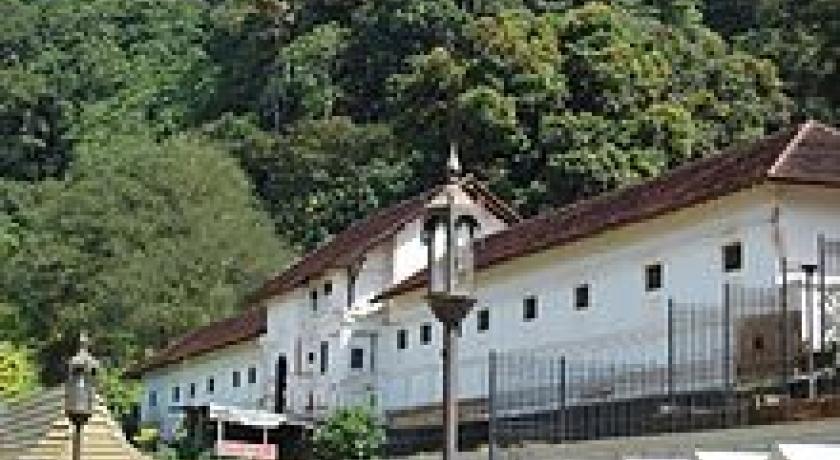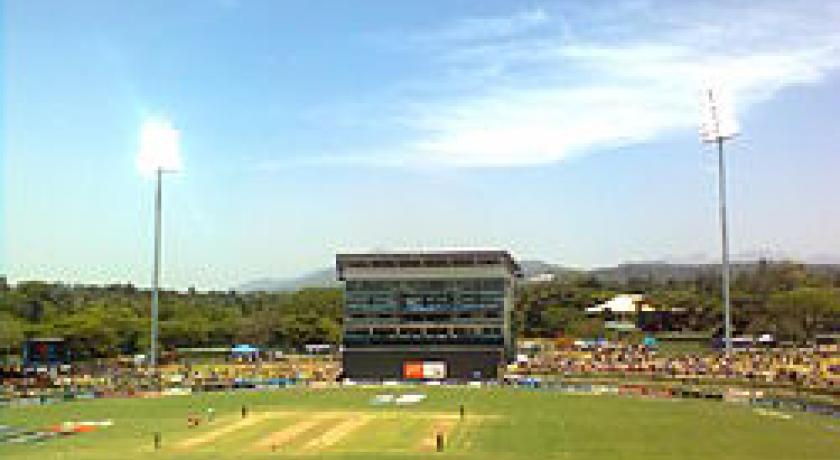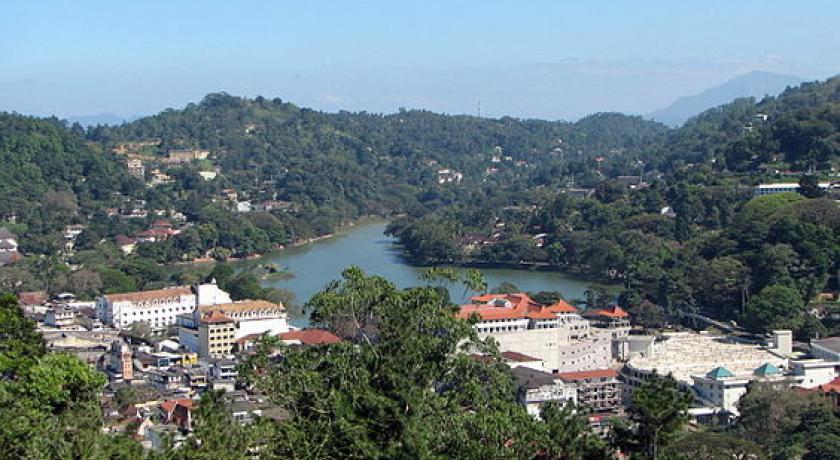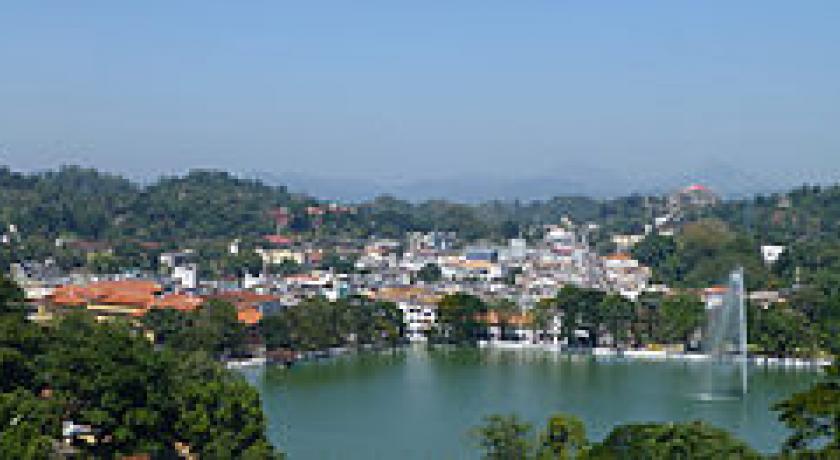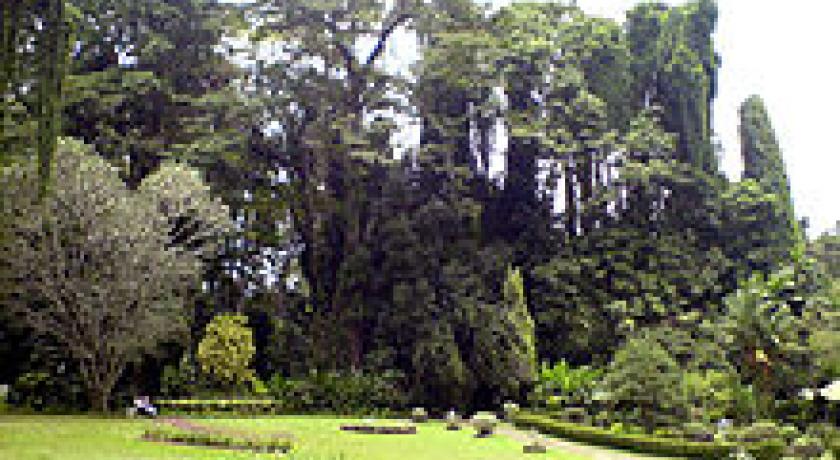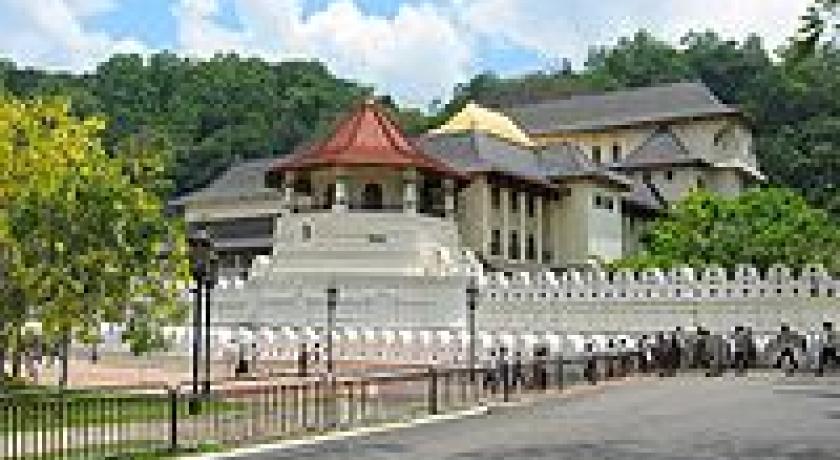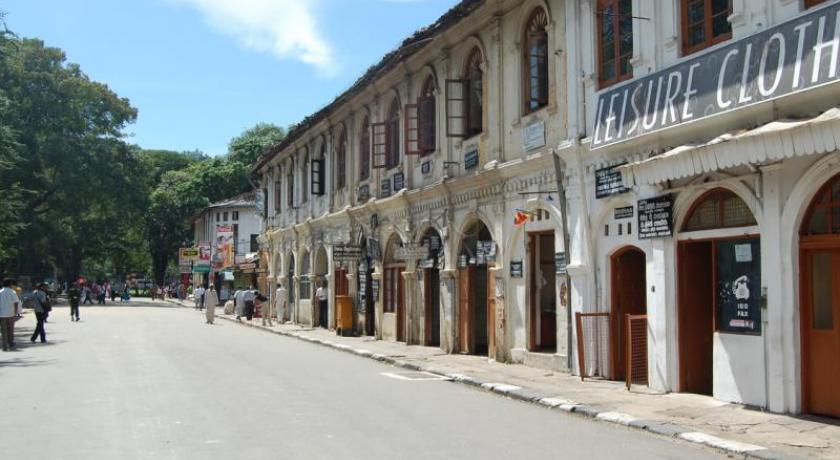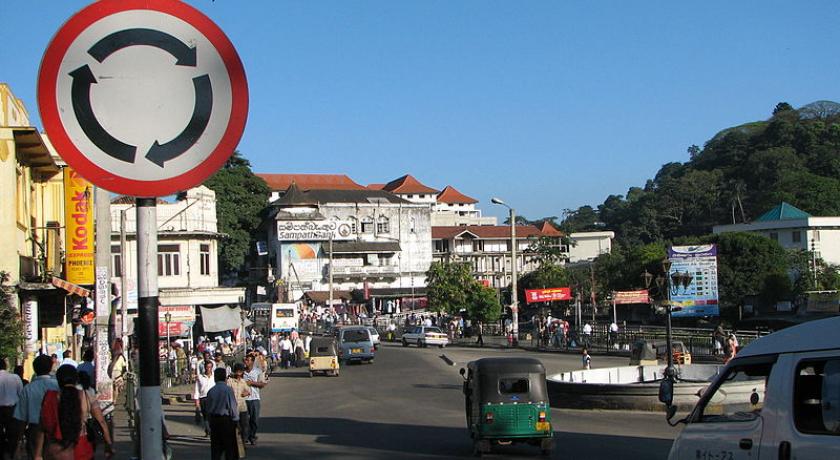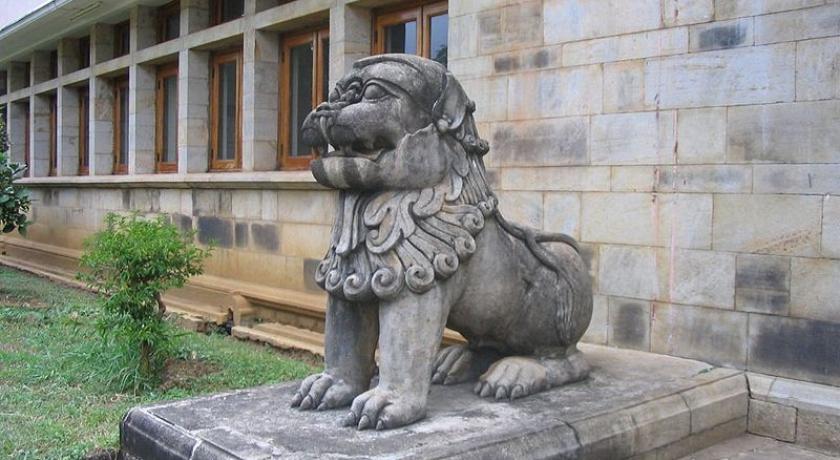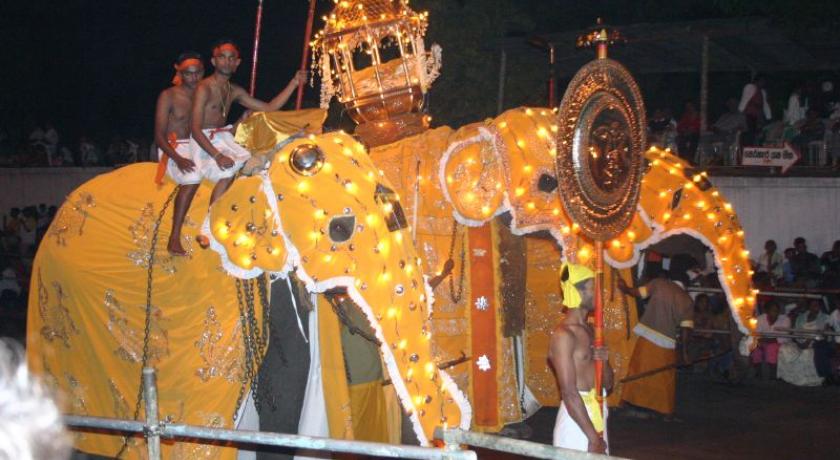Description
Kandy is a major city in Sri Lanka, located in the Central Province, Sri Lanka. It was the last capital of the ancient kings' era of Sri Lanka. The city lies in the midst of hills in the Kandy plateau, which crosses an area of tropical plantations, mainly tea. Kandy is both an administrative and religious city and is also the capital of the Central Province. Kandy is the home of The Temple of the Tooth Relic (Sri Dalada Maligawa), one of the most sacred places of worship in the Buddhist world. It was Etymologydeclared a world heritage site by UNESCO in 1988.
Etymology
The city and the region has been known by many different names and versions of those names. Some scholars suggest that the original name of Kandy was Katubulu Nuwara located near present Watapuluwa. However, the more popular historical name is Senkadagala or Senkadagalapura, officially Senkadagala Siriwardhana Maha Nuwara (meaning 'great city of Senkadagala of growing resplendence'), generally shortened to 'Maha Nuwara'. According to folklore, this name originated from one of the several possible sources. One being the city was named after a brahmin with the name Senkanda who lived in a cave near by, and another being a queen of Vikramabahu III was named Senkanda, and after a coloured stone named Senkadagala. The Kingdom of Kandy has also been known by various names. The English name Kandy, which originated during the colonial era, is derived from an anglicised version of the Sinhalese Kanda Uda Rata (meaning the land on the mountain) or Kanda Uda Pas Rata (the five counties/countries on the mountain). The Portuguese shortened this to "Candea", using the name for both the kingdom and its capital. In Sinhalese, Kandy is called Maha nuwara, meaning "Great City" or "Capital", although this is most often shortened to Nuwara.
History
Historical records suggest that Kandy was first established by the Vikramabahu III (1357–1374 CE), who was the monarch of the Kingdom of Gampola, near the Watapuluwa area, north of the present city, and named Senkadagalapura at the time.
Kandyan Kingdom
Sena Sammatha Wickramabahu (1473–1511) was the first king of the Kingdom of Kandy, he was a royal from the Kotte Royal Blood line and ruled Kandy as a semi-independent kingdom under the Kingdom of Kotte, making it the new capital of the Kandyan Kingdom. Sena Sammatha Wickramabahu was followed by his son Jayaweera Astana (1511–1551) and then by Karaliyadde Bandara (1551–1581) who was succeeded by his daughter Dona Catherina of Kandy (1581–1581). Dona Catherina was succeeded by Rajasinha I. Rajasinha I however, preferred to rule the hill country from the Kingdom of Sitawaka on the west of the island. A period of turmoil for power ended with the ascent to the throne by Konappu Bandara who came to be known as Vimaladharmasuriya I. Having embraced Buddhism, he consolidated his authority further by bringing the tooth relic of the Lord Buddha to Kandy from a place called Delgamuwa.
In 1592 Kandy became the capital city of the last remaining independent kingdom in the island after the coastal regions had been conquered by the Portuguese. Several invasions by the Portuguese were repelled, most notably in the campaign of Danture. After the Sinhalese–Portuguese War and the establishment of Dutch Ceylon, attempts by the Dutch to conquer the kingdom were repelled.
The kingdom tolerated a Dutch presence on the coast of Sri Lanka, although attacks were occasionally launched. The most ambitious offensive was undertaken in 1761, when King Kirti Sri Rajasinha attacked and overran most of the coast, leaving only the heavily fortified Negombo intact. When a Dutch retaliatory force returned to the island in 1763, Kirti Sri Rajasinha abandoned the coastline and withdrew into the interior. When the Dutch continued to the jungles the next year, they were constantly harassed by disease, heat, lack of provisions, and Kandyan sharpshooters, who hid in the jungle and inflicted heavy losses on the Dutch.
The Dutch launched a better adapted force in January 1765, replacing their troops' bayonets with machetes and using more practical uniforms and tactics suited to jungle warfare. The Dutch were initially successful in capturing the capital, which was deserted, and the Kandyans withdrew to the jungles once more, refusing to engage in open battle. However, the Dutch were again worn down by constant attrition. A peace treaty was signed in 1766. The Dutch remained in control of the coastal areas until 1796, when Great Britain took them over (while the Netherlands under French control) due to the Kew letters during the Napoleonic wars. British possession of these areas was formalized with the treaty of Amiens in 1802. The next year the British also invaded Kandy in what became known as the First Kandyan War, but were repulsed.
As the capital, Kandy had become home to the relic of the tooth of the Buddha which symbolizes a 4th-century tradition that used to be linked to the Sinhalese monarchy, since the protector of the relic was the ruler of the land. Thus the Royal Palace and the Temple of the Tooth were placed in close proximity to each other.
The last ruling dynasty of Kandy were the Nayaks. Kandy stayed independent until the early 19th century. In the Second Kandyan War, the British launched an invasion that met no resistance and reached the city on February 10, 1815. On March 2, 1815, a treaty known as the Kandyan Convention was signed between the British and the Radalas (Kandyan aristocrats). With this treaty, Kandy recognized George III as its King and became a British protectorate. The last king of the kingdom Sri Vikrama Rajasinha was captured and taken as a royal prisoner by the British to Vellore Fort in southern India along with all claimants to the throne. Some of the family members were also exiled to Tanjore (now known as Thanjavur, in Tamil Nadu). Their erstwhile living place is still referred to as "Kandy Raja Aranmanai" on the eastern part of Thanjavur town on Old Mariamman Koil Road.
Colonial era
During the British period in Sri Lanka the history of Kandy and its townscape witnessed rapid and drastic change and particularly after the Uva Rebellion. Sir Lowry is noted for recording in his Gazetteer "The story of English rule in the Kandyan country during the rebellion of 1818 cannot be related without shame...Hardly a member of the leading families remained alive...Those whom the sword and the gun had spared, cholera and small pox and privations had slain by the hundreds...Others became ignorant and apathetic. Any subsequent development efforts of the government for many years were only attempts begun and abandoned".
The first time Sri Lanka fully fell into the hands of a foreign power was in Kandy with the signing of the Kandyan Convention in 1815 at the Sri Dalada Maligawa. The king, Vikrama Rajasinha of Kandy who was of South Indian ancestry faced powerful opposition from the Sinhalese chieftains and sought to reduce his power. A successful coup was organized by the Sinhalese chieftains in which they accepted the British crown as their new king. This ended over 2500 years of Sri Lankan monarchs and the line of Kandyan monarchs and Rajasinha was taken as prisoner. By 2 March 1815 the islands sovereignty was under that of the British Empire. The treaty was not signed by the deposed King but by members of his court and other dignitaries of the Kandyan Kingdom.
In 1848 led by Gongalegoda Banda and Puran Appu saw the rebellion known as the Matale Rebellion. Prior to that the city and the country had been under British rule for 32 years, in which the British had expropriated the common land of the peasantry and reduced them to extreme poverty. The Kandyan villagers were forced to abandon their traditional way of life and become wage-workers in the abominable conditions that prevailed on these new estates and plantations that had been introduced, despite all the pressure exerted by the colonials the Kandyans refused. This forced the British to bring in hundreds of thousands of Tamil coolies from southern India. The Rebellion began on the 26 July 1848 with Gongalegoda Banda, crowned as king, and Puran Appu, as prime minister, and their main objective to capture Kandy back from the British. The Matale Rebellion was a peasant revolt in the hands of the Common people, the Kandyan leadership being totally wiped out after the Uva Rebellion, marked the first step in a transition from the classic feudal form of anti-colonial revolt to modern independence struggles. The leadership was for the first time passed from the Kandyan provinces into the hands of ordinary people or non-aristocrats.
In 1944, during World War II, the South East Asia Command of the allies was moved to Kandy, where it remained till the end of the war.
Contemporary Kandy
It is the second-largest city of the island and the capital of Central Province of modern Sri Lanka. Its geographic location has made it a major transportation hub in the island: while Kandy being the gateway to the Central Highlands of Sri Lanka, the city can be reached by major motorways in every direction of the island. The railway line from Colombo, the sea port on the western coast runs via Kandy to the farthest point of Badulla in the Central Highlands. The main roads Colombo-Kandy and Kandy-Nuwara Eliya are two of the most scenic roads of Sri Lanka; Colombo-Kandy road passes through rubber plantations and rice paddies, Kandy-Nuwara Eliya road cuts through paddy fields and seamless tea plantations. Both roads claw their way up winding, rounding over the rings of hills. Currently feasibility studies are afoot for another highway between Colombo and Kandy via Kadawata and the scenic city of Katugastota.
Geography and climate
Topography
Kandy is located in the mountainous and thickly forested interior of the island. The city is located in between multiple mountain ranges including the Knuckles mountain range and the Hanthana Mountain Range, giving the city an elevation of 500 metres (1,600 ft) above sea level. It lies adjacent to the artificial Kandy Lake and south of Udawatta Kele Sanctuary.Today udawatte kele is reducing its area.
Climate
In Köppen-Geiger climate classification system, its climate is tropical rainforest (Af). With Kandy located in the centre of the island and in a high elevation, the city has a relatively wetter and cooler temperatures than that of the tropical climate of the rest of the country, especially the coastal regions. Nuwara Eliya is south to it and has a cooler climate due to its higher elevation. The city has its dry season from January through to April. From May through to July and October to December the region experiences its monsoon season, during this time the weather is rough and unstable. The island being in the northern hemisphere gives Kandy it coldest month in January and its hottest in July. From March through the middle of May is the intermonsoonal period, during this time there is light rain and strong humidity. The humidity is generally between 70% to 79%.
Transportation
Kandy has a public transport system based primarily on buses. The bus service is operated both by private companies and the government's own Sri Lanka Transport Board (SLTB).
Air
The proposed Kandy Airport in the nearby area of Kundasale will create a direct air link to Bandaranaike International Airport in Colombo.[19] The new airport will act as catalyst to the tourism industry in Sri Lanka.
Roads
A-Grade highways
- A1 highway (Kandy road) connects Colombo with Kandy.
- A9 highway connects Jaffna with Kandy.
- A26 highway connects Padiyathalawa with Kandy via Mahiyangana.
- A10 highway connects Puttalam with Kandy via Kurunegala and Katugastota.
-
High-speed expressways
Colombo – Kandy high-speed elevated expressway running 115 km is currently under construction, providing a high-speed link between the two largest economic centers.
Rail
Matale Line of the Sri Lanka Railways connects Kandy by way of Peradeniya and Matale. It connects to the Main Line that links Colombo and Badulla
Architecture
Palace of the Tooth relic
On the north shore of the lake, which is enclosed by a parapet of white stone dating to the beginning of the 19th century, are the city's official religious monuments, including the Royal Palace and the Temple of the Tooth, known as the Dalada Maligawa (daḷadā māligāva). Reconstructed in the 18th century, the Dalanda Maligawa is built on a base of granite that was inspired by the temples of Sri Lanka's former capital city, Anuradhapura. An array of materials (limestone, marble, sculpted wood, ivory, etc.) contribute to the richness of this temple. Throughout this small holy city, a number of recent Buddhist monasteries can be found.
The monumental ensemble of Kandy is an example of construction that associates the Royal Palace and The Temple of the Tooth (Palace of the tooth relic) is the place that houses the Relic of the tooth of the Buddha. Originally part of the Royal Palace complex of the Kandyan Kingdom, it is one of the holiest places of worship and pilgrimage for Buddhist around the world. It was last of a series of temples built in the places where the relic, the actual palladium of the Sinhalese monarchy, was brought following the various relocations of the capital city.
The Palace of the Tooth relic, the palace complex and the holy city of Kandy are associated with the history of the dissemination of Buddhism. The temple is the product of the last peregrination of the relic of the tooth of Buddha and the testimony of a religion which continues to be practiced today.
Royal Palace
The Royal Palace of Kandy is the last Royal Palace built in the island. Although only part of the original palace complex remain. The Temple of the Tooth was part of this complex, due to the ancient tradition that stated that the monarch is the protector of the relic though which the ruler of the land. It today houses the National Museum Kandy which holds an extensive collection of artifacts from both the Kandy Kingdom and the British colonial rule.
Lankatilaka Temple
The Lankatilaka Temple is considered to be one of the best preserved examples of traditional Sinhalese temple architecture. Built on a rock, the temple is reached by a long series of rock cut steps. An arched passage of the image house leads through a Mandapa (hall) into the inner sanctum which is richly decorated with beautiful floral designs. The two side walls and the ceiling are decorated with paintings. In the inner sanctum is a colossal seated image of the Buddha.
Gadaladeniya Temple
The Gadaladeniya Temple's design is of South Indian origin with a Devale attached to it, similar in character to the Natha Devale and the Gedige of Adahana Maluwa. The main shrine room has a seated Buddha statue and the remains of some paintings of the Gampola period.
Among other important temples around Kandy are Dodanwala Devalaya (shrine), Embekka Devalaya (shrine), Galmaduwa Vihara temple, Handagala Vihara temple, Medawala Vihara and Nalanda Gedige.
Parks and gardens
The Royal Botanical Garden, Peradeniya is situated about 5 km to the west of the city centre at Peradeniya and is visited by 2 million people per year. It is the largest botanical garden on the island extending to 147 acres (59 ha) and containing over 4000 species of plants. Knuckles Mountain Range in Kandy is a world heritage site of UNESCO. Alagalla Mountain Range also named in English as Potato Range both famous for trekking in Sri Lanka. The Udawatta Kele (Udawatta Forest) is a protected sanctuary situated in the heart of the city, just north of Temple of the Tooth. Known as "Uda Wasala Watta" in Sinhalese meaning, "the garden situated above the royal palace" it was designated as a forest reserve in 1856, and it became a sanctuary in 1938.
The Royal Palace Park, known as Wace Park is a small park that overlooks Kandy Lake and most of the city. In the park is a Japanesefield gun which was captured by the British 14th Army in Burma during World War II and presented to the city of Kandy by Lord Mountbatten, Supreme Allied Commander South East Asia Theatre.
Culture
Leisure and entertainment
Kandyans do many things for leisure and entertainment in the city. Kandy is very popular due to the annual procession known as the Esala Perahera, in which one of the inner caskets used for covering the tooth relic of Buddha is taken in a grand procession through the streets of the city. This casket is taken on a royal tusker. The procession includes traditional dancers and drummers, flag bearers of the provinces of the old Kandyan kingdom, the Nilames (lay custodians of temples ) wearing their traditional dresses, torch bearers and also the grandly attired elephant. This ceremony which is annually held in the months of July or August, attracts large crowds from all parts of the country and also many foreign tourists.
Kandy City Centre is commercial and shopping complex open in 2005 at Dalada Veediya. Is the most modern commercial complex in Sri Lanka. The complex is studded with ultra modern features, also incorporating traditional architecture of Kandy during the medieval period of Sri Lanka. The city centre is host to several leading banks, a fully equipped supermarket, modern restaurants, an entertainment zone, a well designed state of the art food court, Sri Lanka's leading book shops, flora and an ayurweda site. There is a five-level car park outside that is the largest car park in Kandy.
Culinary
Kandy has a modest range of restaurants, as well as an abundance of confectioneries. A range of cuisines is available, including Sri Lankan, Indian, Chinese, European and some multinational fast food outlets such as Pizza Hut, and KFC.
Music
Kandy gave birth to the pioneer Grunge outfit Paranoid Earthling, which was the first rock band to emerge from the Hill Capital. Kandy is also the stronghold for black metal bands like "Pariah Demise" "Forlorn Hope" and some Thrash metal bands like the pioneers Thrash metal in Kandy "Forsaken" and "Ancient Curse"
Sport
Kandy has established a proud record of producing some of the top most sports people in Sri Lanka for a wide range of sports such as cricket, rugby union, Association football, swimming, hockey, athletics, table tennis, boxing, swimming, basketball, golf and even baseball, which has only been introduced into Kandy recently. Kandy has produced national captains of cricket and rugby, and athletes that play at the highest level of all sports.
Unlike the rest of the country rugby is the most popular sport in the region. This is because of the local rugby union club, Kandy Sports Club being the reigning Club Rugby Champions in the national league for almost a decade, as well as the fondness and support the local schools treat the sport with. The Singer Sri Lankan Airlines Rugby 7's tournament is an annual international rugby union event held at the local Bogambara Stadium, attracting nations from all over the world.
Cricket is widely played in Kandy with the city having three first class teams in the Premier Trophy, Saracens, Kandy Cricket Club and Kandy Youth Cricket Club, as well as being the main city for the Sri Lankan Premier League side Kandurata Kites. Kandy is host to the Sri Lanka national cricket team with two Test status grounds, Asgiriya International Stadium and the newly built state of the art Pallekele International Cricket Stadium. Both stadiums have held World Cup matches. Other Cricket playing venues are Katugastota Oval (St.Anthony's College ground), Lake View ground at Dharmaraja College and Police ground Kandy.
Sports like Hockey, volleyball, the national sport of Sri Lanka, and Association football however has not taken off in Kandy as much as other sports, due to the lack of proper playing fields, funding and support and Cue games like billiards and snooker have hardly anyone playing. However Basketball, Table tennis, badminton and even swimming are popular due to the high participation of students and schools.
Address
Kandy
Sri Lanka
Lat: 7.293976784 - Lng: 80.641563416


